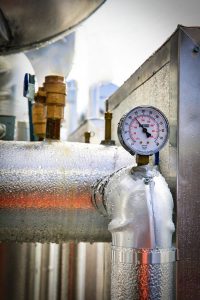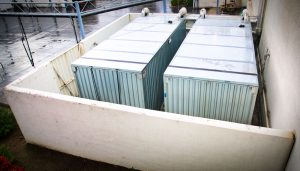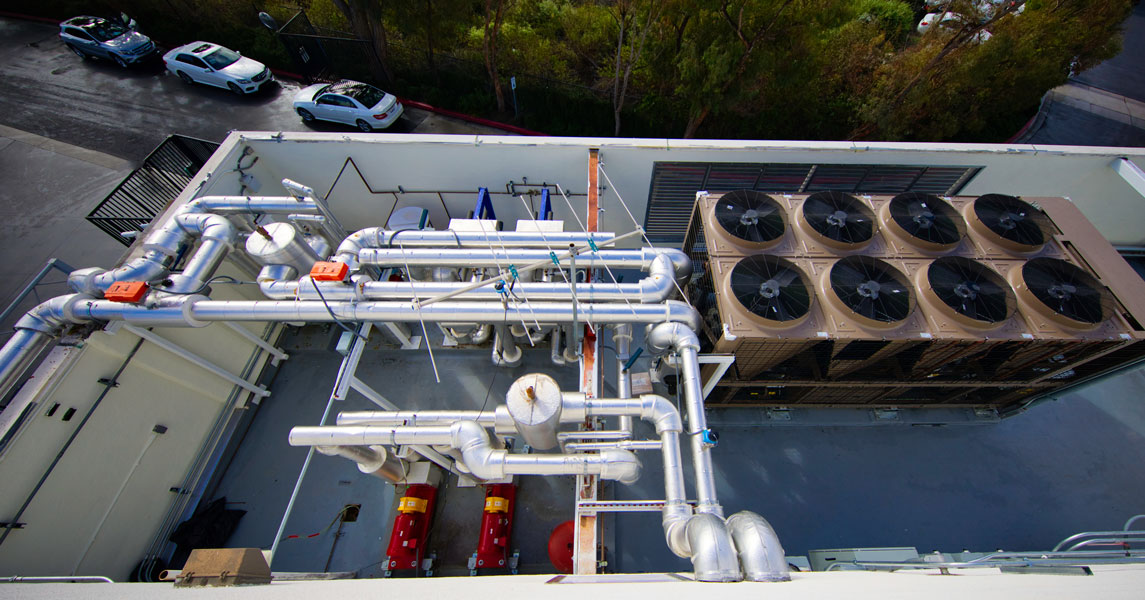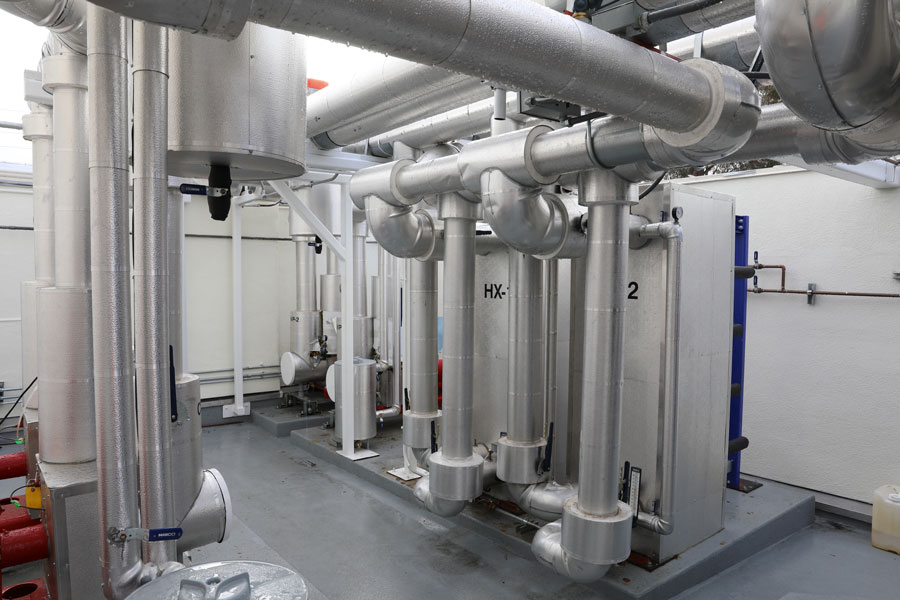Fletcher Jones Motorcars is Reducing Power Demand Through Thermal Energy Storage

As part of a renovation to Fletcher Jones Motorcars flagship Newport Beach location, thermal energy storage is being employed to reduce the total power demand on the electrical system by shifting part of the HVAC load to nighttime “off peak” hours.
 Power consumption on most electrical distribution systems is maximized during the day time during normal working hours. Typically, commercial and industrial facilities are in operation and electrical power is required for manufacturing, HVAC, lighting, computers and other support systems. In addition, power consumption is increased during the summer months when hotter temperatures put more load on the HVAC systems.
Power consumption on most electrical distribution systems is maximized during the day time during normal working hours. Typically, commercial and industrial facilities are in operation and electrical power is required for manufacturing, HVAC, lighting, computers and other support systems. In addition, power consumption is increased during the summer months when hotter temperatures put more load on the HVAC systems.
Because of the increased demand during the day time, electrical utilities have started charging their users on a Time Of Use (TOU) basis. With a TOU rate structure, each day is divided into “On Peak”, “Mid Peak” and “Off Peak” hours. Energy charges as well as power demand charges are highest during the On Peak hours and cheapest during the Off Peak hours. This rate structure is intended to incentivize energy consumers to reduce loads during the On Peak hours. One way of doing this is to shift usage to Mid Peak or Off Peak hours.
 Fletcher Jones Motorcars has taken big steps to help reduce their On Peak energy use and power demand by installing a thermal ice storage system that shifts part of their air conditioning load to Off Peak hours. Instead of running the main air conditioning cooling equipment during the On Peak hours, it is ran at night, in order to form ice inside of special thermal storage tanks. Through the course of the following day, the ice in the tanks is melted, and used to cool the facility.
Fletcher Jones Motorcars has taken big steps to help reduce their On Peak energy use and power demand by installing a thermal ice storage system that shifts part of their air conditioning load to Off Peak hours. Instead of running the main air conditioning cooling equipment during the On Peak hours, it is ran at night, in order to form ice inside of special thermal storage tanks. Through the course of the following day, the ice in the tanks is melted, and used to cool the facility.
The thermal storage system was installed as part of a 240,000 square foot renovation to the Fletcher Jones Motorcars facility in Newport Beach. The renovation design by the architecture firm Gensler includes an expansion of their showroom, new 92 bay service facility, renovation of the HVAC system and addition of photovoltaic solar panels with battery storage. Skender Construction is responsible for the construction of the renovation. The HVAC system, including the installation and testing of the thermal storage system was completed by Western Allied Corporation.
At peak conditions, the thermal storage system is expected to shift approximately 1,000 kW-Hrs of energy and lower the total demand by 180 kW.
Chiller and Thermal Storage Piping Network

Thermal Storage Pumps and Heat Exchangers


